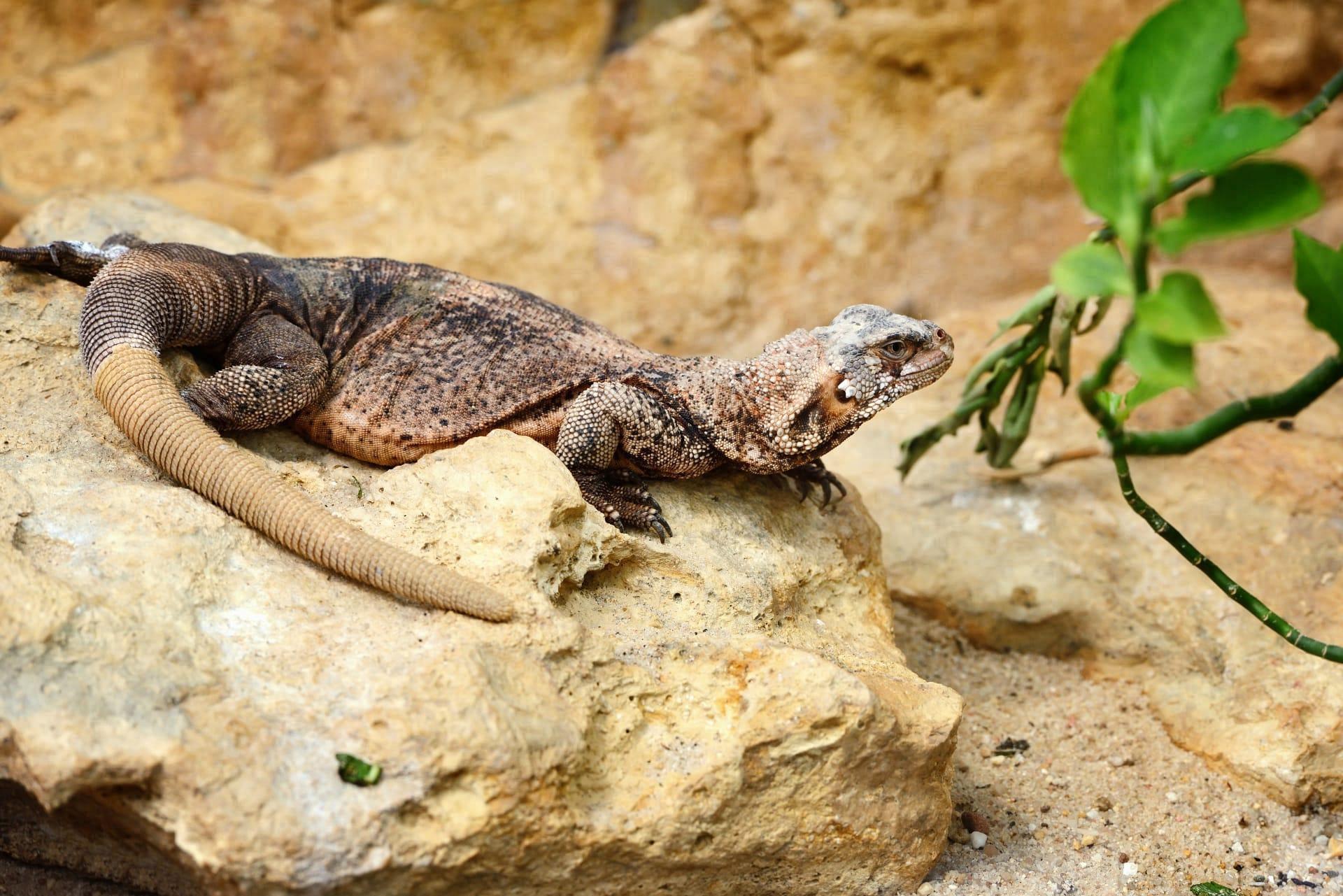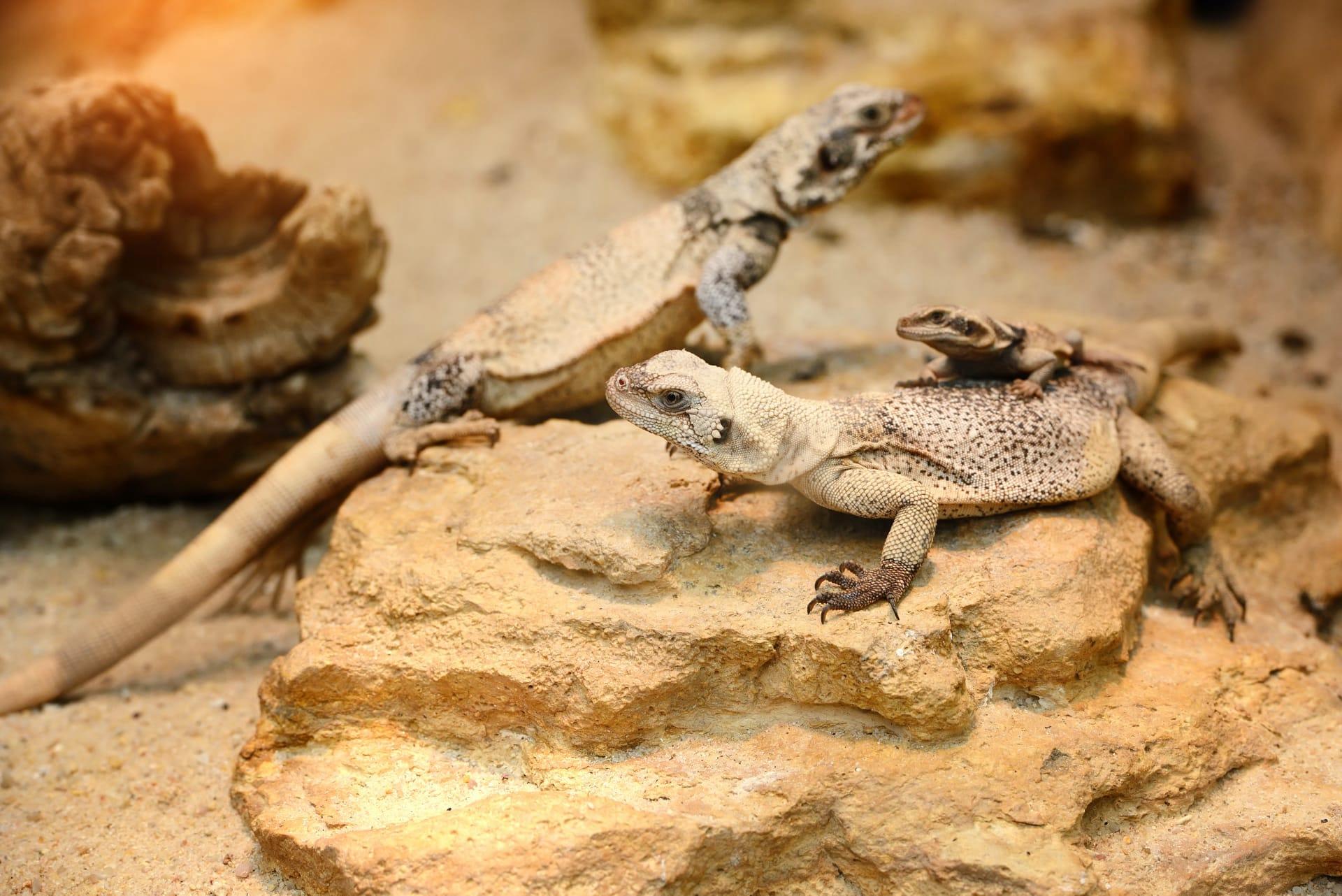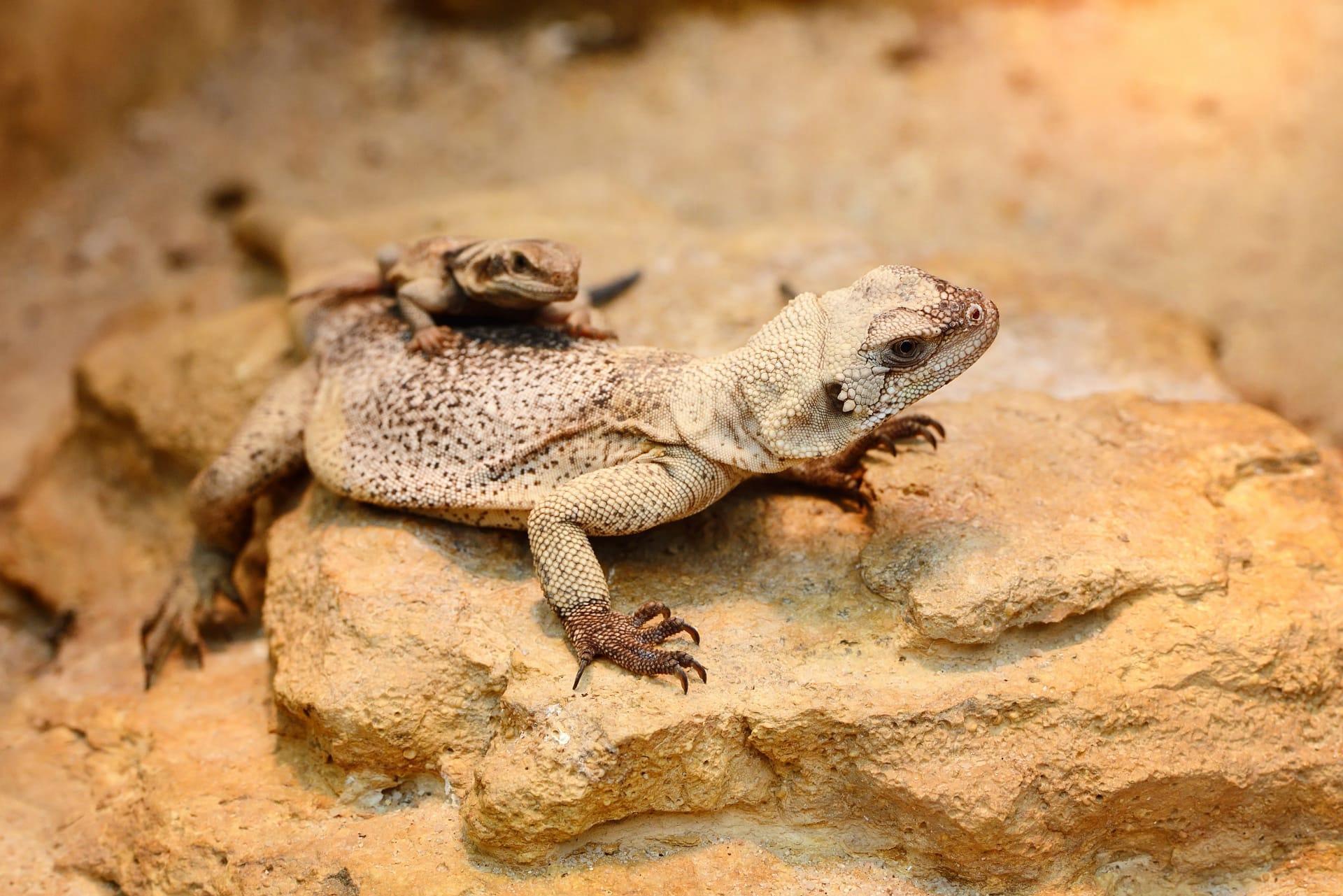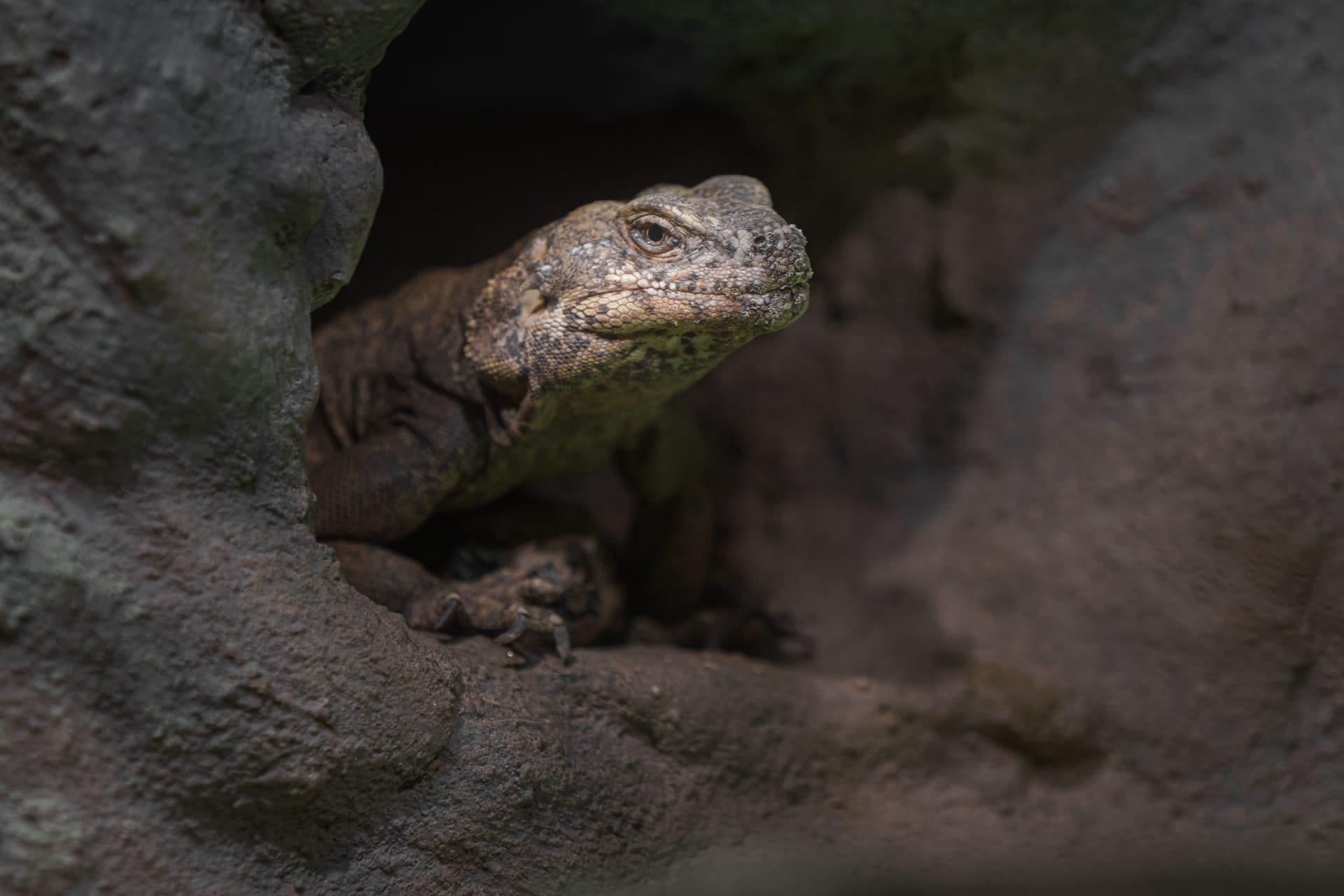1
Did you know that the American Chuckwalla, a large lizard found in the deserts of southwestern United States and northern Mexico, has a unique method for avoiding predators? When threatened, it scurries into a rock crevice and inflates its body by taking in air. This inflation makes it difficult for predators to extract them from their hiding spots. Fascinatingly, their loose skin folds, which might look awkward, actually aid in this survival technique. Chuckwallas can grow up to 16 inches long, and this body expansion trick is a crucial part of their defense mechanism in the wild.
Another intriguing fact about Chuckwallas is their diet. They are primarily herbivores, and about 95% of their diet consists of leaves, fruits, and flowers, especially from creosote bushes and brittlebushes. This diet is high in fiber and low in protein, which suits their slow metabolism. Interestingly, the Chuckwalla's digestive system has adapted to efficiently extract moisture and nutrients from such food, helping them survive in arid environments where water is scarce. During the summer, they may eat more insects, adding a bit of protein to their plant-based diet.

2
Did you know that American Chuckwallas have a distinctive social behavior? Unlike many reptiles, they exhibit a sort of social hierarchy, especially among males. Dominant males control territories and have access to prime basking spots and the best food resources. These territories are usually around 0.1 hectares, and dominant males will fiercely defend them against rivals. During breeding season, this social structure becomes more pronounced as males compete for the attention of females.
Interestingly, Chuckwallas communicate through a series of complex body language signals. This includes head bobbing, push-ups, and gaping of the mouth to display dominance or territorial claims. These behaviors are not just for show; they play a vital role in avoiding physical conflicts, which could be harmful. By using these non-verbal cues, Chuckwallas can effectively communicate their intentions and status within their social groups.

3
Chuckwallas have a fascinating adaptation to the extreme temperatures of their desert habitat. They are ectothermic, relying on external heat sources to regulate their body temperature. To warm up, they bask in the sun, and when it gets too hot, they retreat to the shade or burrow into cooler ground. Their body temperature can range from 85 to 90 degrees Fahrenheit (29 to 32 degrees Celsius) during active periods. This temperature regulation is crucial for their survival, as it affects their ability to move, find food, and avoid predators.
Another interesting aspect of Chuckwallas is their longevity. In the wild, they can live for about 10 to 25 years, which is relatively long for a lizard. In captivity, with ideal conditions, their lifespan can extend up to 30 years. This longevity is attributed to their low-stress lifestyle, slow metabolism, and ability to efficiently use resources in their harsh desert environment. It's a testament to their adaptability and resilience in surviving and thriving in such challenging conditions.

4
One of the most striking features of the American Chuckwalla is its skin color. Their coloration varies based on their environment, aiding in camouflage. Typically, Chuckwallas found in rocky, desert regions are gray or brown, blending seamlessly with their surroundings. However, those living in areas with reddish-brown soil may have a reddish hue to their skin. This color adaptation not only helps them avoid predators but also plays a role in thermoregulation, as darker colors absorb more heat.
Female Chuckwallas have a unique reproductive strategy. They lay a clutch of five to 16 eggs, usually in June or July, which they deposit in a burrow or under rocks. What's intriguing is the eggs don't hatch until the following spring, meaning they undergo a prolonged incubation period of approximately nine months. This delayed hatching aligns with more favorable environmental conditions, ensuring a higher survival rate for the hatchlings.

5
American Chuckwallas have an interesting relationship with the plant life in their habitat. They play a significant role in seed dispersal for the plants they consume. As they eat fruits and flowers, the seeds pass through their digestive system and are excreted in different locations. This helps in the propagation of various plant species across their desert habitat, contributing to the ecological balance.
Lastly, did you know that Chuckwallas are capable of shrinking their size? Not literally, but they can lose up to 30% of their body mass during the dry season. This is because they store fat in their tails, which they utilize for nutrition and hydration when food and water are scarce. This ability to regulate their body mass according to environmental conditions is a remarkable adaptation, allowing them to survive long periods of drought in their desert homes.